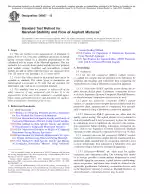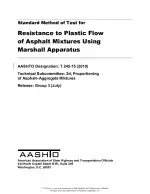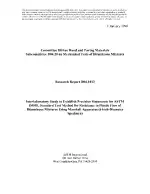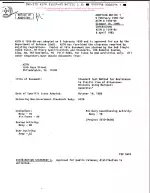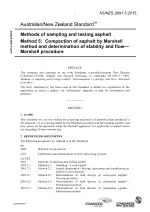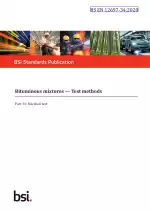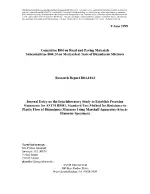ASTM D6927-15 PDF Download
Standard ENStandard Test Method for Marshall Stability and Flow of Asphalt Mixtures
Also Known As:
ASTM D6927-15 is a standard test method that describes the measurement of the Marshall stability and flow of asphalt mixtures. This method is used for laboratory mix design and evaluation as well as for monitoring the production process of asphalt mixtures in plants. It can also be used to compare different mixtures and assess the effects of conditioning, such as with water.
The Marshall stability and flow are characteristics of asphalt mixtures that are determined from tests conducted on compacted specimens of a specified geometry. Two different methods can be used for conducting the test: Method A, which uses a loading frame with a load ring and a dial gauge, and Method B, which uses a load-deformation recorder with a load cell and a linear variable differential transducer (LVDT) or other automatic recording device.
Marshall stability is the peak resistance load obtained during a constant rate of deformation loading sequence, although a less defined type of failure may be observed depending on the composition and behavior of the mixture. Alternatively, Marshall stability can be defined as the load obtained when the rate of loading increase begins to decrease, creating a horizontal curve. The magnitude of Marshall stability varies with aggregate type, grading, bitumen type, grade, and amount.
Marshall flow, on the other hand, is a measure of deformation of the asphalt mix determined during the stability test. It represents the total sample deformation from the point where the tangent of the linear part of the curve intersects the x-axis to the point where the curve starts to become horizontal. Acceptable limits for flow exist, and if the flow exceeds the upper limit, the mix is considered too plastic or unstable, while if it falls below the lower limit, it is considered too brittle.
The test results obtained from the Marshall stability and flow test are applicable to dense-graded asphalt mixtures with maximum size aggregate up to 1 inch (25 mm). Mix design should involve testing a minimum of three specimens at each increment of binder content, with the binder content varying in one-half percent increments over a range of binder content. The results can be plotted against binder content to select an optimum binder content for the mixture. It is important to note that the results from field laboratory tests on plant mix laboratory compacted (PMLC) asphalt mixtures may vary from laboratory design values due to differences in mixing efficiency and aging.
| Descriptors | plastic flow, flow test, pavements, ,Asphalt Mixtures,Marshall Stability Test,Physical Test,Rheological Properties,Roads and Pavements |
| ICS Codes | 93.080.20 - Road construction materials |
| Language(s) | English |
| File Size | 327.7 KB |

